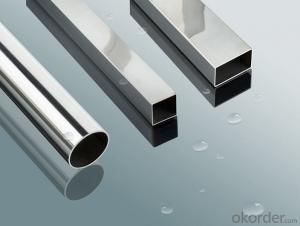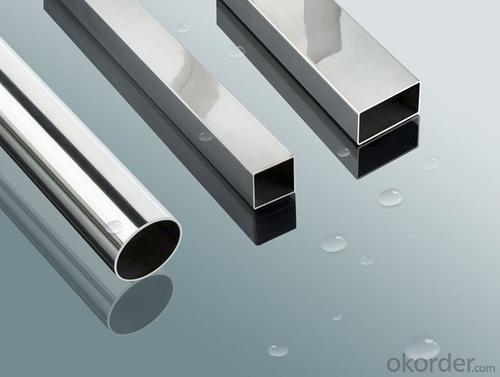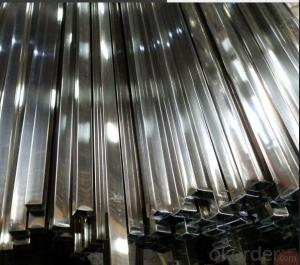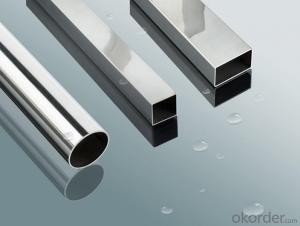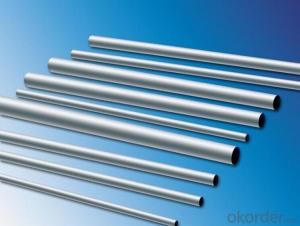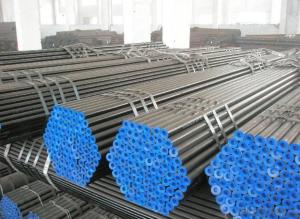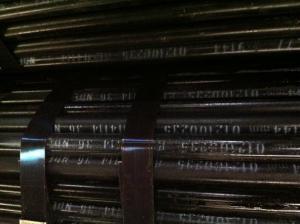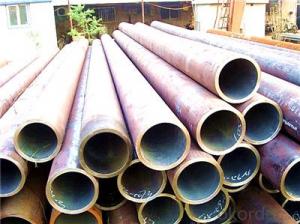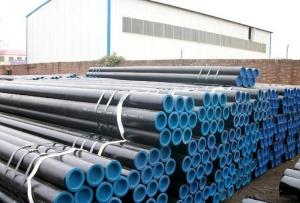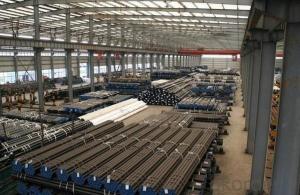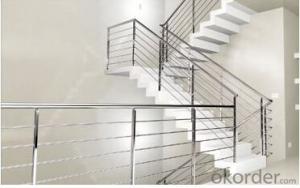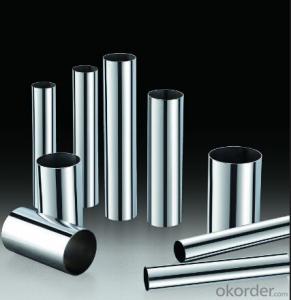Cold Rolled Precision Steel Tube/Seamless Steel Pipe
- Loading Port:
- Shanghai
- Payment Terms:
- TT OR LC
- Min Order Qty:
- 1000 kg
- Supply Capability:
- 10000 kg/month
OKorder Service Pledge
OKorder Financial Service
You Might Also Like
applications of carbon steel pipe :
(1).Construction: Hall Structure, Sea Trestle, Airport Structure, Shipbuilding, Security Door
Frames, Garage Doors, Strengthening Liners of Steel Doors and Windows, Indoor Partition
Walls, Cable Bridge Structures and Expressway Safety Guards, Balustrade, Decorating,
Residential, Ornamental Pipes
(2).Automotive Parts: Motorcar Case, Car and Bus Manufacture, Vehicles
(3).Agriculture: Agricultural Equipment
(4).Industry:Machinery,Solar Stent, Offshore Oil Field, Mine Equipment, Electromechanical
Hardware, , heavy engineering, Mining and Resources, Process Engineering, Materials Handling, Mechanical Parts
(5).Traffic: Walking Rails, Roll-up Doors, Guardrail, Plaza Structure, Signage, Road Furniture,
Fencing
(6).Scaffolding Tube: Material Storage Racks, Pallets, Hydraulic Platforms, Trusses, Columns,
Purlins, Greenhouse Stands Towers
(7).Other: Sports Apparatus, Leisure Equipment, Furniture, School Furniture
ASTM A335 Seamless Alloy-Steel Pipe
Standard: BS 1139, BS 3059-2, JIS G3454-2007
Grade: 10#-45#, 15NiCuMoNb5, 10Cr9Mo1VNb
Detailed introduction to ASTM A335 seamless alloy steel pipe:
ASTM A335 seamless alloy steel pipe
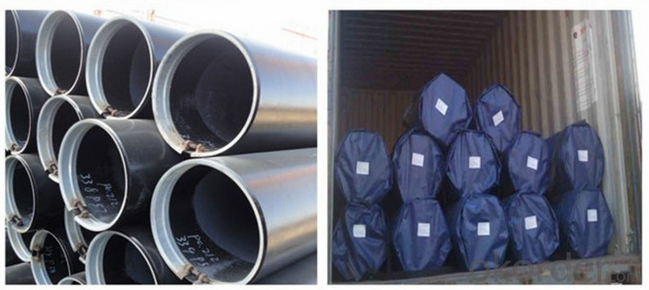
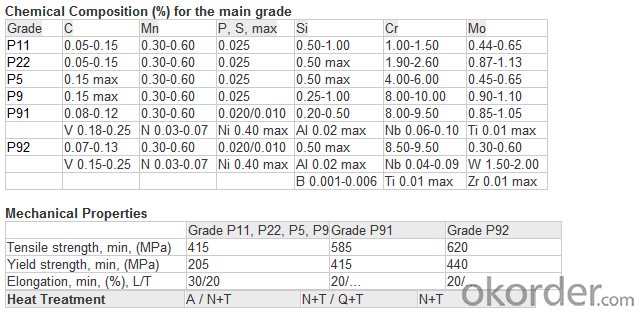
FAQ:
1) why you chose us ?
Professional Manufacturer and supplier of Steel pipe
More than 14 years’ professional producing experience
We can get the lowest ex-factory prices. The price are quite reasonable and it is lower than our commercial peers. also, we can guarantee the qualities of our products.
BV, ISO certificates and SGS test can be provided to assure the quality of our products.
2) Our minimum order quantity:
10 Metric Tons or one 20ft or 40ft Container.
3) How about the Delivery Time?
The steel pipe will be produced since we getting your deposit by T/T or Your original L/C. For normal size, some stocks in our factory now, we can supply once you need.
4)What kind of payment does your company support?
T/T, 100% L/C at sight, Cash, Western Union are all accepted.
5) Do you charge for the samples?
According to our company principle, we just charge for samples, you pay for the freight /courier charge.
6) Main market:
Mid East, South America, Africa, Southeast Asia, India etc
- Q: Can stainless steel pipes be used for air conditioning systems?
- Yes, stainless steel pipes can be used for air conditioning systems. Stainless steel is known for its corrosion resistance, durability, and ability to handle high temperatures, making it a suitable material for air conditioning systems. It helps maintain the quality of air and prevents contamination due to its non-reactive nature. Additionally, stainless steel pipes offer excellent mechanical strength and are resistant to damage caused by external factors such as moisture or chemicals.
- Q: Can stainless steel pipes be used in food processing plants?
- Yes, stainless steel pipes can be used in food processing plants. Stainless steel is a common choice in the industry due to its corrosion resistance, durability, and ability to withstand high temperatures. It does not react with food or contaminate it, making it a safe and hygienic option for transporting food and beverages in processing plants.
- Q: Are stainless steel pipes suitable for oil and gas applications?
- Indeed, oil and gas applications find stainless steel pipes to be appropriate. Stainless steel boasts exceptional corrosion resistance, rendering it the perfect choice for the conveyance and storage of oil and gas, substances that frequently harbor corrosive components. Additionally, stainless steel pipes exhibit remarkable strength and durability, guaranteeing their ability to endure high-pressure circumstances and unforgiving surroundings. Moreover, stainless steel proves effortless to cleanse and uphold, thus diminishing the likelihood of contamination within oil and gas operations. All in all, stainless steel pipes emerge as a dependable and economically viable option for oil and gas applications.
- Q: Do stainless steel pipes require any special maintenance?
- Yes, stainless steel pipes require minimal maintenance due to their high resistance to corrosion. However, regular cleaning and inspections are recommended to ensure optimal performance and longevity.
- Q: What is the maximum pressure that stainless steel pipes can handle?
- The maximum pressure that stainless steel pipes can handle depends on various factors such as the grade of stainless steel, the pipe's dimensions, the temperature of the fluid being transported, and the specific application of the pipe. Stainless steel pipes are known for their high strength and corrosion resistance, making them suitable for a wide range of applications where pressure is a concern. The most commonly used stainless steel grades for pipes are 304 and 316, which have different mechanical properties and maximum pressure ratings. For instance, type 304 stainless steel pipes have a maximum pressure rating of around 14,000 psi (pounds per square inch) at room temperature. However, this rating can vary depending on the pipe's wall thickness and diameter. Thicker pipes with larger diameters can generally handle higher pressures. On the other hand, type 316 stainless steel pipes are known for their increased corrosion resistance, especially in environments with chloride ions. They have a slightly higher maximum pressure rating compared to type 304, usually around 15,000 psi at room temperature. It is essential to note that the maximum pressure rating decreases as the temperature of the fluid increases. Stainless steel's mechanical properties change with temperature, and its strength reduces as it gets hotter. Therefore, it is crucial to consider the maximum operating temperature and determine the appropriate pressure rating accordingly. Additionally, it is always recommended to consult relevant industry standards, codes, and regulations, such as ASME B31.3 for process piping or ASME B31.1 for power piping, as they provide detailed guidelines on the maximum pressure ratings for stainless steel pipes in various applications. To ensure the safety and reliability of stainless steel pipes under high-pressure conditions, it is advisable to consult with a qualified engineer or a specialist in stainless steel piping systems. They can evaluate the specific requirements of your application and provide accurate information regarding the maximum pressure that stainless steel pipes can handle.
- Q: Stainless steel pipe is mainly used in what areas?
- According to the use of stainless steel pipe can be divided into oil well pipe (casing, tubing and drill pipe etc.), line pipe, boiler tube, mechanical structure, hydraulic prop pipe pipe, cylinder pipe, geological pipe, chemical pipe (high pressure fertilizer pipe, oil cracking tube) and shipbuilding pipe etc..
- Q: What is the cost difference between stainless steel pipes and other materials?
- The cost difference between stainless steel pipes and other materials can vary depending on factors such as the type of material, size, and quality. Generally, stainless steel pipes tend to be more expensive than materials like PVC or galvanized steel. However, stainless steel pipes offer superior durability, corrosion resistance, and longevity, making them a worthwhile investment in many applications.
- Q: Are stainless steel pipes suitable for wastewater treatment ponds?
- Yes, stainless steel pipes are suitable for wastewater treatment ponds. Stainless steel is highly resistant to corrosion, which is essential for withstanding the harsh and corrosive environment of wastewater treatment ponds. Additionally, stainless steel pipes are durable, have a long lifespan, and can handle high-pressure systems, making them a reliable choice for wastewater treatment applications.
- Q: How do stainless steel pipes compare to carbon fiber pipes?
- Stainless steel pipes possess distinct qualities and find usage in diverse fields. Renowned for their robustness and power, they exhibit exceptional resistance to corrosion and can withstand elevated temperatures and pressures. Consequently, they prove suitable for various industries, including oil and gas, chemical, and construction. Boasting an elongated lifespan and the ability to bear heavy loads, stainless steel pipes emerge as a reliable option for numerous applications. Nevertheless, their relatively hefty weight necessitates additional support structures. Conversely, carbon fiber pipes, characterized by their lightness and high strength-to-weight ratio, serve as an alternative. Crafted from carbon fibers embedded in a resin matrix, they yield a formidable and rigid material. Aerospace, automotive, and sports equipment industries commonly employ carbon fiber pipes. Their lightweight nature permits enhanced fuel efficiency in vehicles and augmented performance in sports equipment. However, carbon fiber pipes prove pricier than their stainless steel counterparts and may lack the desired resilience to extreme temperatures or corrosive surroundings. To summarize, stainless steel pipes excel in durability and corrosion resistance, making them well-suited for demanding tasks. Carbon fiber pipes, on the other hand, offer lightweight construction and a commendable strength-to-weight ratio, rendering them ideal for weight reduction-focused applications. Ultimately, the choice between stainless steel and carbon fiber pipes hinges on specific requirements and the trade-offs between cost, weight, and performance.
- Q: What is the difference between the stainless steel pipe welded pipe and seamless pipe?
- Welding performance: chemical composition of seamed pipe and seamless pipe are different. The production of seamless steel components only meets the basic requirements of astm. The production of seamed tube steel containing suitable for chemical composition of welding. For example, the mixing of silicon, sulfur, manganese, oxygen, and a certain proportion of elements such as the triangle ferrite can produce a welding flux which is easy to transfer heat during welding, so as to make the whole weld be welded well. The lack of steel pipe above the chemical components, such as seamless tube, can produce all kinds of unstable factors in the process of welding, welding and welding penetration is not easy.
Send your message to us
Cold Rolled Precision Steel Tube/Seamless Steel Pipe
- Loading Port:
- Shanghai
- Payment Terms:
- TT OR LC
- Min Order Qty:
- 1000 kg
- Supply Capability:
- 10000 kg/month
OKorder Service Pledge
OKorder Financial Service
Similar products
Hot products
Hot Searches
Related keywords
